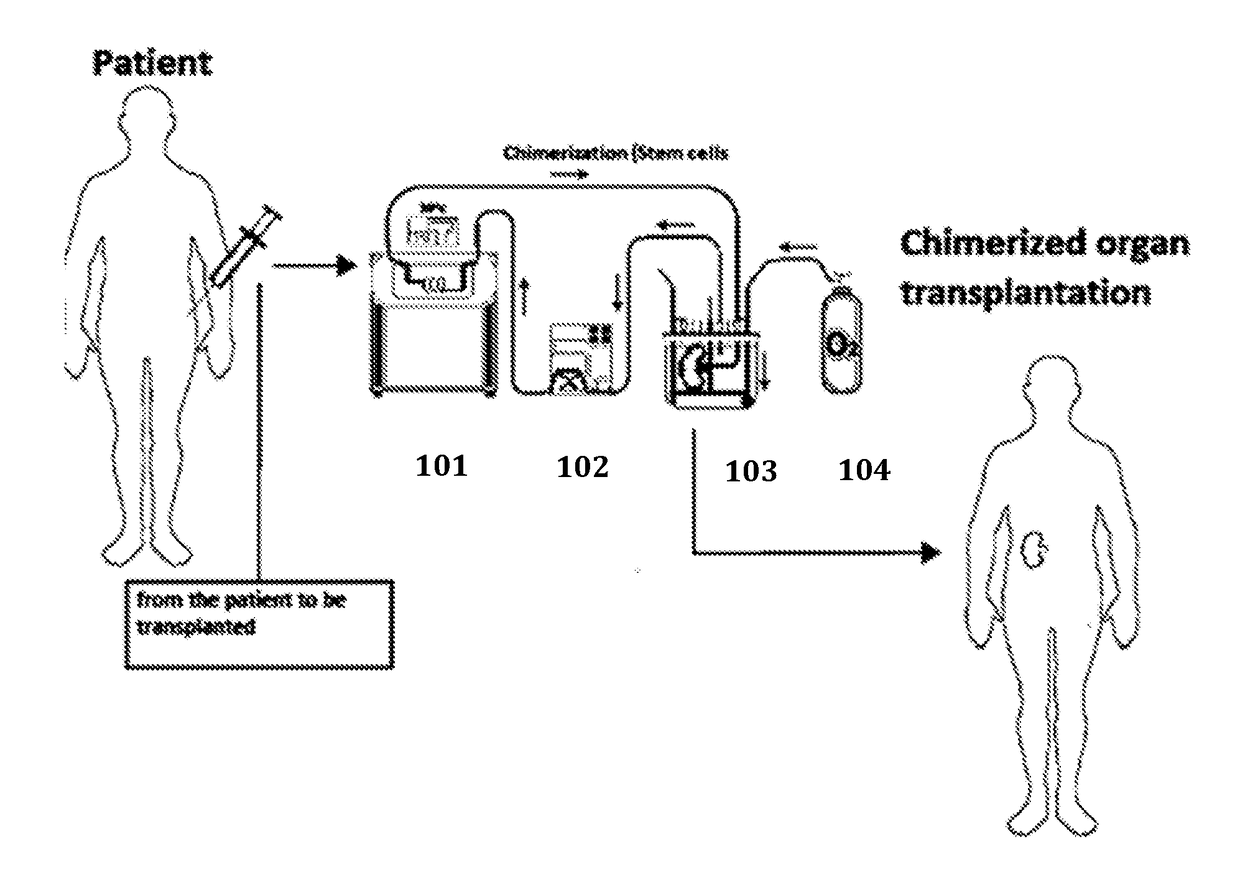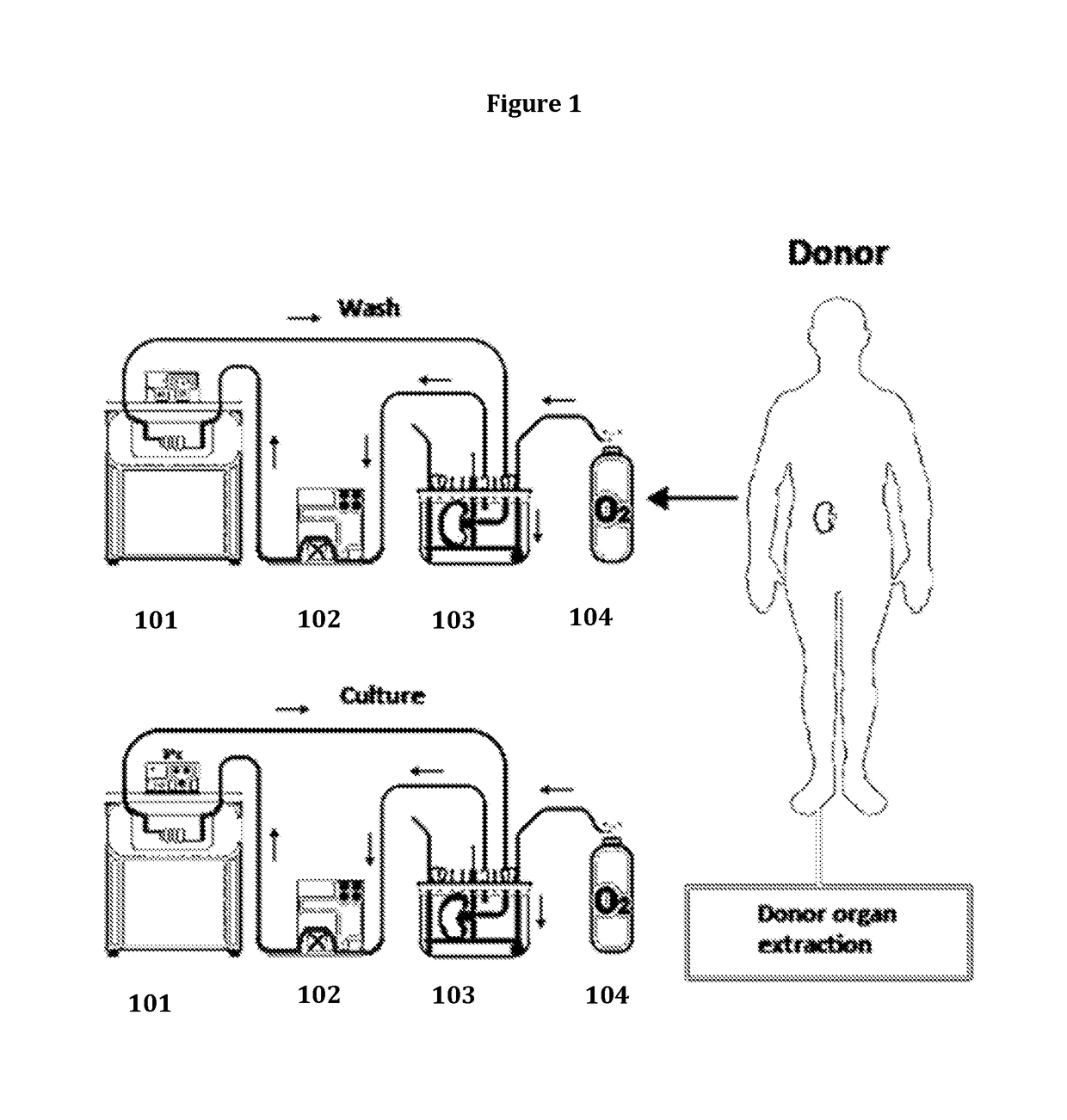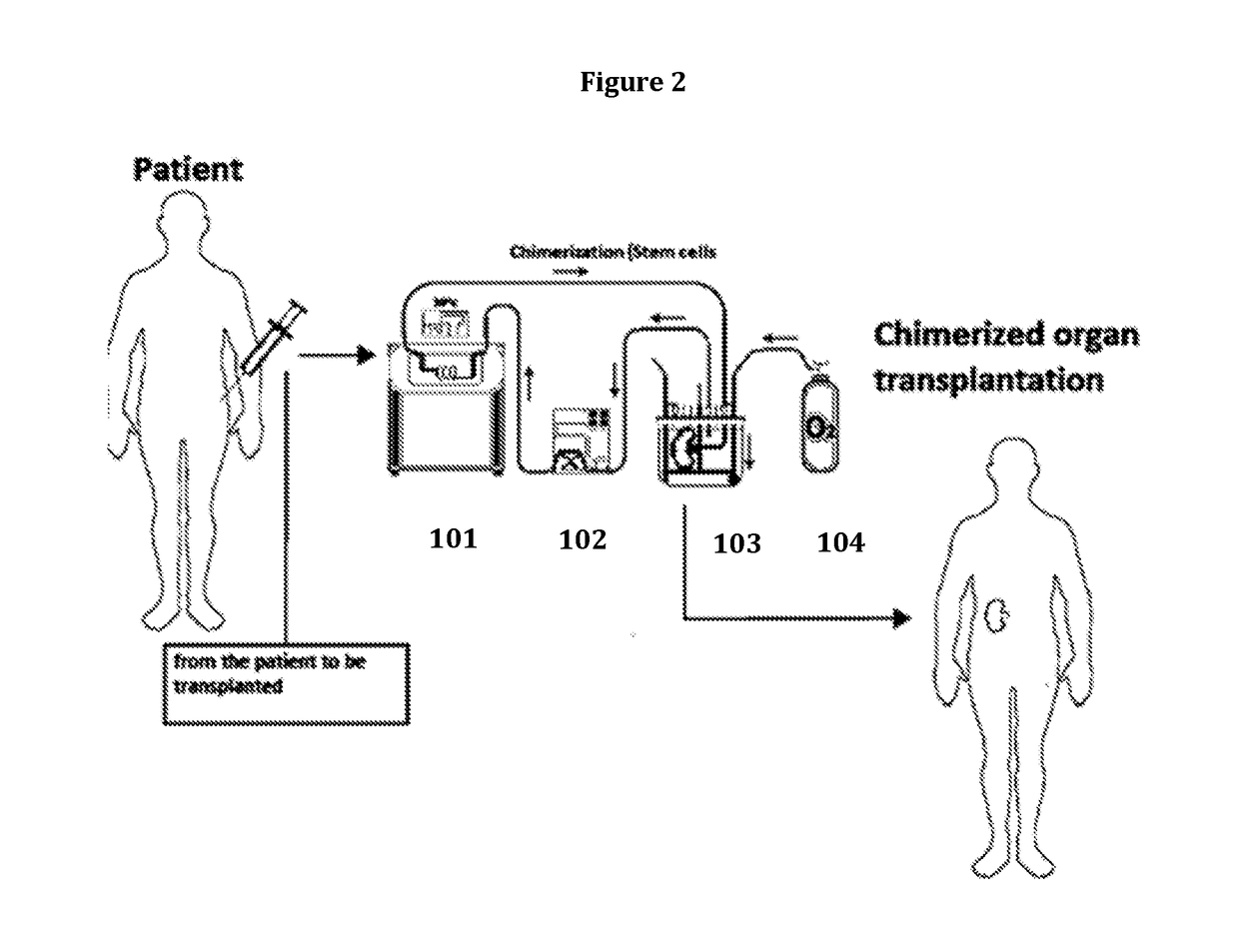Method for organ chimerization through cellular treatment
a cell therapy and organ technology, applied in the field of tissues preservation, can solve the problems of only being able to match with the organ, the procedure faces the possibility of rejection by the receptor of the implanted organ, and most transplants must be performed from unmatched organs
- Summary
- Abstract
- Description
- Claims
- Application Information
AI Technical Summary
Benefits of technology
Problems solved by technology
Method used
Image
Examples
example 1
[0038]The electrolytic solution was prepared using the following elements: sodium chloride 0.8766 g (15 mMol); potassium chloride 0.6710 g (9 mMol); monopotassium α-ketoglutaric acid 0.1842 g (1 mMol); hexahydrate magnesium chloride 0.8132 g (4 mMol); L-histidine hydrochloride monohydrate 3.7733 g (18 mMol); L-histidine 27.9289 g (180 mMol); L-tryptophan 0.4085 (2 mMol); mannitol 5.4651 g (30 mMol); dehydrated calcium chloride 0.0022 g (0.015 mMol); in a total volume of 1000 mL.
[0039]The wash was prepared with HBSS without phenol red (1×); RPMI without phenol red (1×); glutamate with a concentration of 1-2×; sodium pyruvate with a concentration of 1-2 mM; bovine albumin or peptone with a concentration of 0.125-0.375%; vitamin C at a concentration of 0.25-0.50 mg / ml; N-acetylcysteine at a concentration of 0.04-0.08%; nicotinamide 0.25-0.50 mg / mL; penicillin (at a concentration of 100,000 U / L) / streptomycin (at a concentration of 100,000 μg / L); amphotericin B at a concentration of 750 ...
PUM
 Login to View More
Login to View More Abstract
Description
Claims
Application Information
 Login to View More
Login to View More - R&D
- Intellectual Property
- Life Sciences
- Materials
- Tech Scout
- Unparalleled Data Quality
- Higher Quality Content
- 60% Fewer Hallucinations
Browse by: Latest US Patents, China's latest patents, Technical Efficacy Thesaurus, Application Domain, Technology Topic, Popular Technical Reports.
© 2025 PatSnap. All rights reserved.Legal|Privacy policy|Modern Slavery Act Transparency Statement|Sitemap|About US| Contact US: help@patsnap.com



